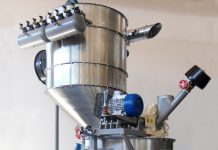
The interest of consumers in dietary fibre-rich products with a low calorific value is continuously increasing. In this context, the nutritional value of pasta may be easily modified by modifying the original recipe. However, this variation entails also the assessment of the impact of various processing methods on the quality of modified pasta. A recent study conducted by a team of Polish researchers (Piwińska et al., 2015), investigated the effects of vacuum-drying on the colour and hardness of pasta enriched with oat fiber powder. In particular, in the pasta samples, wheat flour was replaced with different levels of oat: 0, 4, 8, 12, 16 and 20 g/100 g. Pasta (fusilli) was dried at very high temperature and in a vacuum dryer. The results showed that vacuum-drying and oat had a significant impact on the colour and water uptake of pasta. The brightness and yellowness are significantly higher in vacuum-dried pasta than in high-temperature dried pasta. Furthermore, it was observed that the colour (parameters L* and a*) for conventional pasta significantly differs from that of pasta containing oat flour, irrespective of the level of flour substitution. Water uptake and swelling index are higher in vacuum-dried samples than in pasta dried using high-temperature. Finally, drying curves point out that the vacuum process is faster than that conducted in atmospheric conditions (high temperature). In brief, the study leads to the conclusion that vacuum-drying provides a general improvement of pasta properties, on the ground that the product texture suffers a minor deterioration during cooking compared to high-temperature dried pasta. However, further investigation is required for a more detailed analysis of the mechanisms driving the vacuum-drying process.
References
M. Piwińska et al., LWT – Food Science and Technology, 63, 2015, 647-653



